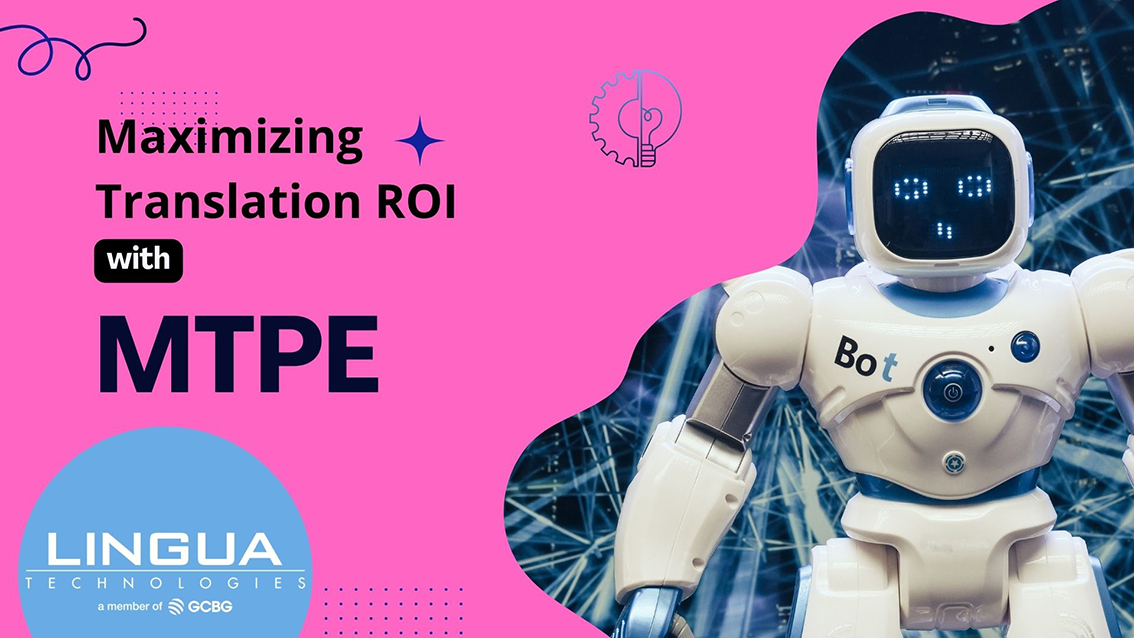Machine Translation Post Editing or MTPE is an attempt in the translation world to reduce its reliance on human translators. For decades, the high costs and the turnaround for translations done by humans have been an issue.
The massive amount of information requiring translation has exploded exponentially in the last decade, and human translators just are not able to meet the short timeline demanded. With new information and data generated and created every day, a longer translation timeline may mean that the translation of this information and data may be obsolete when it is completed.
Artificial intelligence's evolution has elevated translation capabilities and capacity by leaps and bounds. While at the current state, it is still far from making human translators redundant, its role as a formidable provision of support to human translators to bring about scalability is indisputable.
MTPE seemed like a good compromise with humans working alongside translation technology to provide the scalability, consistency, and cost reduction that global communication so badly needed.
How can we maximize ROI for translation with MTPE?
With MTPE, we are looking at two main types of editing services:
- Light Post Editing
- Full Post Editing
At one end of the spectrum, you have an untreated MT, while at the other extreme, you have the human-quality translation.
With light post-editing, you investigate things like wrong translations, terminology usage, grammar, and spelling.
As we move towards human-quality translation output, full post-editing will be involved, and things like style, natural target and culturally appropriate localization will be taken care of.
Below are the considerations for the two different editing services from the perspective of buyers of translation and editors of MT.
Consideration of MTPE for Buyers of Translation
Light Post Editing | Full Post Editing |
|---|---|
Minor quality | Human quality |
Structure | Structure |
Content | Content |
Consistency | |
Fluency | |
Topic knowledge |
Consideration of MTPE for Editors
Light Post Editing | Full Post Editing |
|---|---|
Typos | Typos |
Incorrect Translation | Incorrect Translation |
Untranslated Segments | Untranslated Segments |
Words added or omitted | Words added or omitted |
Glossary – check terminologies provided | Glossary |
Unacceptable or culturally offensive content | Inappropriate or culturally offensive content |
Numbers/figures/date format | Numbers/figures/date format |
Punctuation | |
Client's preferences: Style and fluency |
Common errors in MT
Machine Translation is far from perfect. The final output's quality depends on many factors, as discussed in our previous blog: Introduction to MTPE – Machine Translation Posting Editing.
Even with good preparation, we can still expect errors. Thus, the importance of human intervention. Below are some common mistakes in translation seen in MT:
- Unable to decipher the significance of the upper and lower case and what it stands for in the source text.
- Erroneous translation for unknown words: words that are not in the dictionary and product-specific terminology.
- Long sentences in source text may produce awkwardly translated sentences
- Grammatically incorrect or informal style
- Nonstandard punctuation: punctuation marks, such as commas and full stops, help the program identify sentence and clause boundaries
- Idiomatic expressions
- The omission of optional words that clarify the function of other words in the sentence, such as that, which, who, or whom
- Out-of-context translation
In Summary
To maximize translation ROI when working with MTPE, it is important to consider the following:
- Evaluate the quality of the MT output before you start working on it
- During the correction, bear in mind if the client has requested a light post edit or a full post edit
- Be mindful of over-editing and under-editing
- Correct linguistic mistakes (unnecessary upper/lower cases; omitted/added text; figures, date, time formats; punctuation etc.)
- QA checklist (create a checklist or apply the Checklist from the client.)
Apart from working with experienced linguists who are familiar with the use of CAT and QA tools and trained in the MTPE process, buyers of translation must also decide what is important to them and the purpose and usage of the translation to determine if MTPE is the right choice for their businesses.

